Hygiene Practices for Disease-Free Fish Farms: A Comprehensive Guide
Maintaining hygiene in fish farming is vital to prevent disease outbreaks and ensure healthy, profitable operations. This guide by Fish Vigyan offers practical strategies and expert insights to help farmers maintain a disease-free, sustainable aquaculture system.
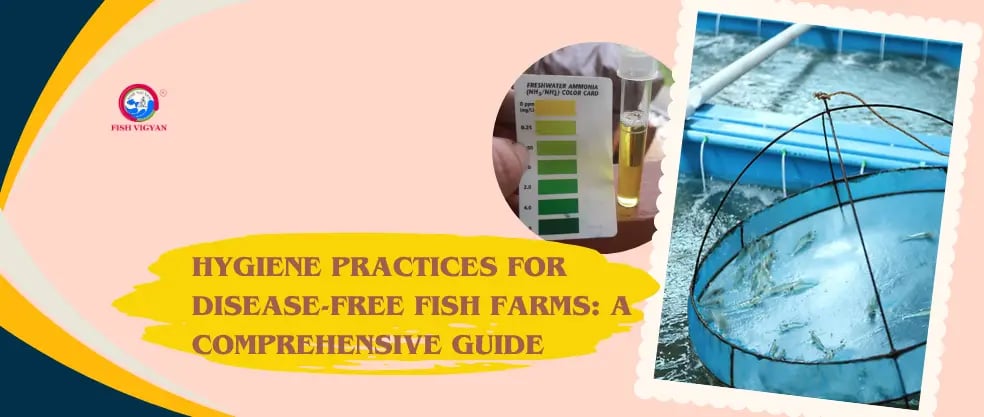

Hygiene Practices for Disease-Free Fish Farms: A Comprehensive Guide
Introduction
Fish farming, or aquaculture, is a rapidly growing industry that provides a significant portion of the world's seafood supply. However, maintaining a disease-free fish farm is a critical challenge for farmers aiming to ensure sustainable production and profitability. Poor hygiene practices can lead to devastating disease outbreaks, resulting in substantial financial losses, reduced fish quality, and even farm closures. According to the Food and Agriculture Organization (FAO), disease outbreaks in aquaculture cause global losses exceeding $6 billion annually (FAO, 2022). Implementing robust hygiene practices is essential to mitigate these risks, enhance fish health, and deliver high-quality products to consumers.
At Fish Vigyan, we specialize in empowering fish farmers with training, high-quality equipment, and expert consultancy to adopt industry-leading hygiene standards. This comprehensive guide explores the importance of hygiene in fish farming, provides actionable strategies to maintain a disease-free farm, and incorporates the latest research to ensure your operations are both productive and sustainable. By following these practices, you can safeguard your fish stock, reduce mortality rates, and boost profitability while meeting consumer demands for safe, high-quality seafood.
Why Hygiene Matters in Fish Farming
Fish live in an aquatic environment where pathogens such as bacteria, viruses, fungi, and parasites can spread rapidly. Poor hygiene practices—such as contaminated water, dirty equipment, or improper feed management—create ideal conditions for diseases to thrive. A 2021 study published on ResearchGate found that over 60% of fish farm losses are attributed to preventable diseases linked to inadequate hygiene (ResearchGate, 2021). These diseases not only lead to high mortality rates but also compromise fish growth, increase production costs, and pose risks to human health through contaminated seafood.
Effective hygiene practices offer numerous benefits, including:
Reduced Fish Mortality: Clean environments minimize stress and disease, leading to healthier fish and lower death rates.
Improved Growth and Productivity: Healthy fish grow faster and convert feed more efficiently, boosting farm output.
Lower Antibiotic Use: Proper hygiene reduces the need for antibiotics, helping combat the global issue of antibiotic resistance.
Enhanced Consumer Safety: High hygiene standards ensure fish are free from harmful pathogens, meeting food safety regulations and consumer expectations.
By prioritizing hygiene, fish farmers can protect their investments, maintain sustainable operations, and contribute to global food security.
Key Hygiene Practices for Disease-Free Fish Farms
To maintain a disease-free fish farm, farmers must adopt a holistic approach to hygiene that addresses water quality, equipment sanitation, feed management, and biosecurity measures. Below, we outline scientifically backed practices to help you achieve optimal fish health and farm performance.
1. Maintain Clean Water Quality
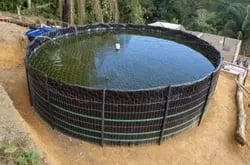

Water is the lifeblood of any fish farm, directly influencing fish health and growth. Poor water quality—marked by high levels of ammonia, nitrites, or low dissolved oxygen—stresses fish, weakens their immune systems, and makes them susceptible to diseases. According to the FAO, maintaining optimal water quality is the cornerstone of disease prevention in aquaculture (FAO, 2022).
Best Practices for Water Quality Management
Regular Water Testing: Test water parameters such as pH (ideal range: 6.5–8.5), ammonia (<0.25 mg/L), nitrite (<0.1 mg/L), and dissolved oxygen (>5 mg/L) at least weekly. Use reliable testing kits or consult with aquaculture specialists to ensure accurate results.
Effective Filtration Systems: Install mechanical and biological filtration systems to remove organic waste, uneaten feed, and harmful chemicals. Mechanical filters trap debris, while biological filters promote beneficial bacteria that break down toxins.
Routine Water Exchange: Replace 10–20% of the water weekly to dilute toxins and maintain a stable environment. Ensure replacement water is treated and free from contaminants.
Adequate Aeration: Use aerators or diffusers to maintain dissolved oxygen levels above 5 mg/L. Proper aeration reduces stress and supports fish metabolism, particularly in high-density systems.
Monitor Temperature: Keep water temperature within the optimal range for your fish species (e.g., 25–28°C for tilapia). Sudden temperature changes can stress fish and increase disease risk.
Additional Tips
Use UV sterilizers to kill waterborne pathogens in intensive farming systems.
Avoid overcrowding, as high stocking densities increases waste production and degrades water quality.
Source water from clean, uncontaminated supplies, and treat it if necessary to remove pollutants.
2. Disinfect Equipment and Tanks Regularly
Contaminated equipment, such as nets, tanks, and feeding tools, can serve as vectors for pathogens, spreading diseases across the farm. Regular cleaning and disinfection are critical to maintaining biosecurity.
Best Practices for Equipment Hygiene
Daily Cleaning: Wash nets, buckets, and tools with a 50 ppm chlorine solution or iodine-based disinfectants after each use. Rinse thoroughly to avoid chemical residues that could harm fish.
Sun-Drying: Expose nets and equipment to sunlight for at least 4–6 hours to kill bacteria, viruses, and parasites through UV radiation.
Tank Sterilization: Between production cycles, empty and sterilize tanks using safe disinfectants like potassium permanganate (1–2 mg/L) or hydrogen peroxide (500 mg/L). Scrub surfaces to remove biofilm, which can harbor pathogens.
Dedicated Equipment: Use separate tools for different tanks or ponds to prevent cross-contamination.
Additional Tips
Replace worn or damaged equipment, as cracks and crevices can harbour pathogens.
Train staff on proper disinfection protocols to ensure consistency.
Keep a cleaning schedule and log all maintenance activities for accountability.
3. Proper Feed Management
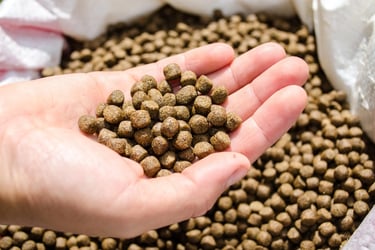

Feed quality and management play a pivotal role in fish health. Contaminated or spoiled feed can introduce pathogens, while overfeeding pollutes water, creating conditions for disease outbreaks.
Best Practices for Feed Management
Choose High-Quality Feed: Purchase feed from reputable suppliers certified for safety and nutritional content. Check for certifications like ISO 22000 to ensure quality.
Proper Storage: Store feed in cool, dry, and well-ventilated areas to prevent mold and bacterial growth. Use airtight containers and avoid storing feed for more than 3 months.
Controlled Feeding: Feed fish according to their species, size, and environmental conditions to avoid overfeeding. Excess feed decomposes, increasing ammonia and reducing water quality.
Remove Uneaten Feed: Clear uneaten feed from tanks or ponds within 30 minutes to prevent decay and water pollution. Use feeding trays to monitor consumption.
Additional Tips
Inspect feed for signs of spoilage, such as unusual odors or mold, before use.
Implement automated feeders to ensure precise feeding schedules and reduce waste.
Rotate feed stock to use older batches first, maintaining freshness.
4. Quarantine New Fish Stock
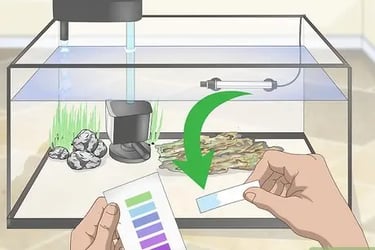

Introducing new fish without proper screening can bring diseases into your farm, endangering existing stock. Quarantine protocols are essential for biosecurity.
Best Practices for Quarantine
Isolation Period: Quarantine new fish in a separate tank for 2–3 weeks. This allows time to observe for signs of disease, such as lethargy, white spots, or abnormal swimming.
Mild Treatments: Use salt baths (3–5 grams per litre) or approved antiparasitic treatments to eliminate external parasites during quarantine.
Health Checks: Monitor quarantined fish daily and consult a fish health expert if symptoms appear. Only introduce healthy fish to the main farm.
Additional Tips
Source fish from reputable hatcheries with health certifications.
Avoid mixing fish from different sources in the same quarantine tank.
Maintain separate equipment for quarantine areas to prevent cross-contamination.
5. Control Waste and Dead Fish
Organic waste, including dead fish and uneaten feed, can accumulate in ponds or tanks, fostering pathogen growth and degrading water quality. Effective waste management is crucial for disease prevention.
Best Practices for Waste Management
Prompt Removal of Dead Fish: Inspect tanks or ponds daily and remove dead fish immediately using nets. This prevents the spread of pathogens and reduces ammonia spikes.
Proper Disposal: Compost or bury dead fish and organic waste at least 100 meters away from water sources to avoid contamination. Alternatively, incinerate waste in compliance with local regulations.
Use of Probiotics: Introduce aquaculture-grade probiotics to break down organic matter naturally, reducing sludge and improving water quality.
Additional Tips
Install screens or filters at water outlets to trap debris and prevent waste buildup.
Regularly clean pond bottoms or tank floors to remove accumulated sludge.
Train workers to handle waste hygienically to avoid spreading pathogens.
6. Prevent Human Contamination
Farm workers can inadvertently introduce or spread pathogens through improper hygiene practices. Implementing strict biosecurity measures for personnel is essential.
Best Practices for Human Hygiene
Hand and Foot Hygiene: Require workers to wash hands with soap and disinfect boots in footbaths containing 100 ppm chlorine or quaternary ammonium compounds before entering the farm.
Protective Gear: Provide clean gloves and aprons for handling fish or equipment. Ensure gear is sanitized between uses.
Limit Access: Restrict farm access to essential personnel and visitors to minimize contamination risks.
Additional Tips
Install handwashing stations and footbaths at all entry points.
Train staff on biosecurity protocols and enforce compliance through regular audits.
Prohibit eating or smoking near fish tanks to avoid introducing contaminants.
7. Regular Health Monitoring
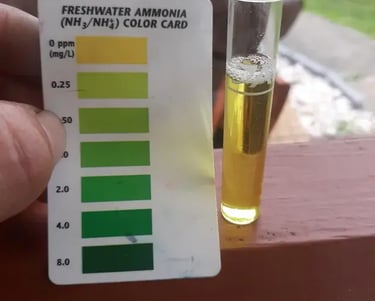

Proactive health monitoring allows farmers to detect and address potential issues before they escalate into outbreaks. Early intervention is key to maintaining a disease-free farm.
Best Practices for Health Monitoring
Daily Observations: Inspect fish for signs of disease, such as erratic swimming, fin rot, or skin lesions. Train staff to recognize these symptoms.
Expert Consultation: Partner with fish health specialists or veterinarians for regular checkups and immediate advice if abnormalities are detected.
Record-Keeping: Maintain detailed logs of water quality, mortality rates, and treatments. This data helps identify patterns and improve management practices.
Additional Tips
Use diagnostic tools, such as PCR tests, to identify pathogens early in high-risk farms.
Implement a health monitoring schedule to ensure consistent checks.
Stay updated on regional disease trends through aquaculture networks or government agencies.
Advanced Hygiene Strategies for Large-Scale Farms
For larger fish farms or those with intensive systems, additional measures can enhance hygiene and biosecurity:
Biosecurity Audits: Conduct regular audits to assess hygiene practices, identify gaps, and implement improvements. Engage third-party experts for unbiased evaluations.
Vaccination Programs: Where available, vaccinate fish against common pathogens, such as Vibrio or Aeromonas, to boost immunity.
Integrated Pest Management: Control external vectors, such as birds or insects, that can carry diseases into ponds. Use netting or deterrents to minimize risks.
Automation: Invest in automated water quality monitoring systems and feeding technologies to reduce human error and ensure consistency.
The Role of Technology in Fish Farm Hygiene
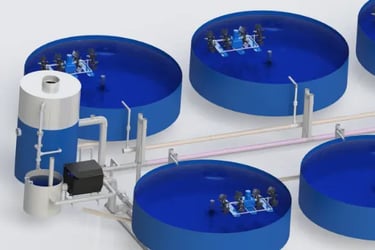

Advancements in aquaculture technology can significantly improve hygiene management. At Fish Vigyan, we recommend the following tools:
Smart Sensors: Real-time monitoring of water parameters like pH, oxygen, and temperature ensures immediate detection of issues.
Automated Feeders: These devices deliver precise feed quantities, reducing waste and water pollution.
UV and Ozone Systems: Advanced water treatment technologies eliminate pathogens without chemicals, ensuring a safe environment for fish.
By integrating these technologies, farmers can streamline operations, reduce labor costs, and enhance hygiene standards.
Economic and Environmental Benefits of Hygiene
Implementing robust hygiene practices not only prevents diseases but also delivers economic and environmental benefits:
Cost Savings: Reduced mortality and antibiotic use lower operational costs, improving profit margins.
Sustainability: Proper waste management and water conservation contribute to environmentally friendly farming practices.
Market Advantage: High-quality, disease-free fish attract premium prices and meet stringent food safety standards, enhancing market competitiveness.
Conclusion
Maintaining impeccable hygiene in fish farming is non-negotiable for preventing diseases, optimizing growth, and ensuring long-term profitability. By prioritizing water quality, equipment sanitation, feed management, and biosecurity, farmers can create a healthy environment for fish and a sustainable business model. The practices outlined in this guide—backed by research from FAO, ResearchGate, and WorldFish—provide a roadmap for achieving disease-free fish farms.
At Fish Vigyan, we are committed to supporting fish farmers with cutting-edge training programs, high-quality equipment, and expert consultancy tailored to your needs. Whether you’re a small-scale farmer or managing a large aquaculture operation, our solutions can help you implement these hygiene practices effectively. Contact us today at Fish Vigyan’s website to learn how we can elevate your fish farming success!
